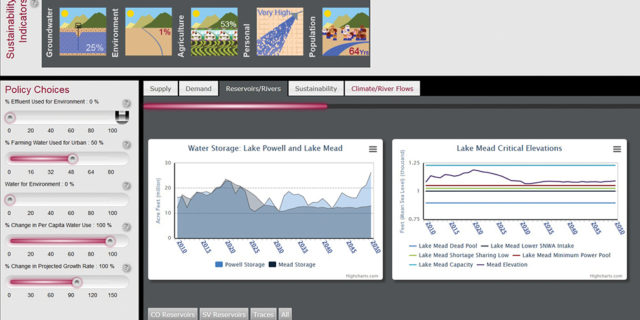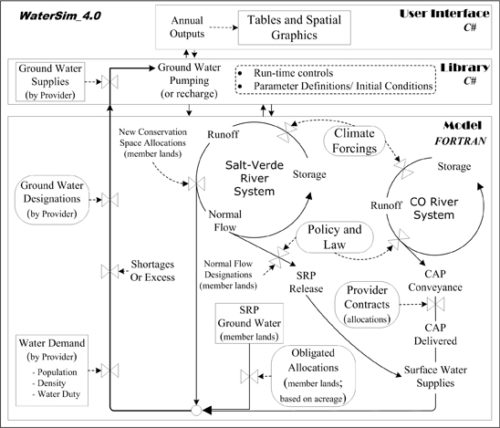WaterSim is a simulation model created to estimate water supply and demand for the Phoenix Metropolitan Area. Users can explore how water sustainability is influenced by various scenarios of regional growth, drought, climate change impacts and water management policies.
WaterSim is a systems dynamics model, as it takes a lot of data that is usually collected separately – including water supply, water demand, climate, population and policy data – and puts it together to give the user a system-level view of how these variables interact. It is “dynamic” because users can change one variable and see how that change affects the other variables.
WaterSim emphasizes the role of visualization in helping to make data intelligible and accessible to stakeholders and decision-makers. Rather than poring over pages upon pages of charts and tables, users can view the data in graphic form. They can make side-by-side comparisons to understand how one variable relates to another. Launched in 2007, WaterSim is now in its fifth iteration, and can be viewed online, through a web API, or in person at ASU’s Decision Theater. It is an open source model that can be dowloaded from the DCDC’s website and the WaterSim 5.0 is being developed in FORTRAN and C#, with a documented application interface (API).



